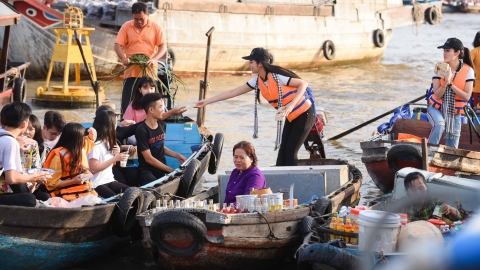I arrived at Chau Giang just as the chants of prayers began to resound from the churches along the Hau River. Cham men in long, checkered sarongs with chvea shirts and cloth kapeak hats. After washing their hands and feet, they went to the church to perform the ceremony. At the same time, women in patterned, light-colored silk clothes, wrapped in colorful mat'ra scarves, began to prepare their goods for the market to sell.
Walking along the path along the village, I heard the chanting echo from the magnificent mosque which the locals simply called Cham Pagoda. Outside, the Cham village was still bustling and busy like a miniature town, they were chattering and laughing, telling funny stories but not losing the traditional rules.
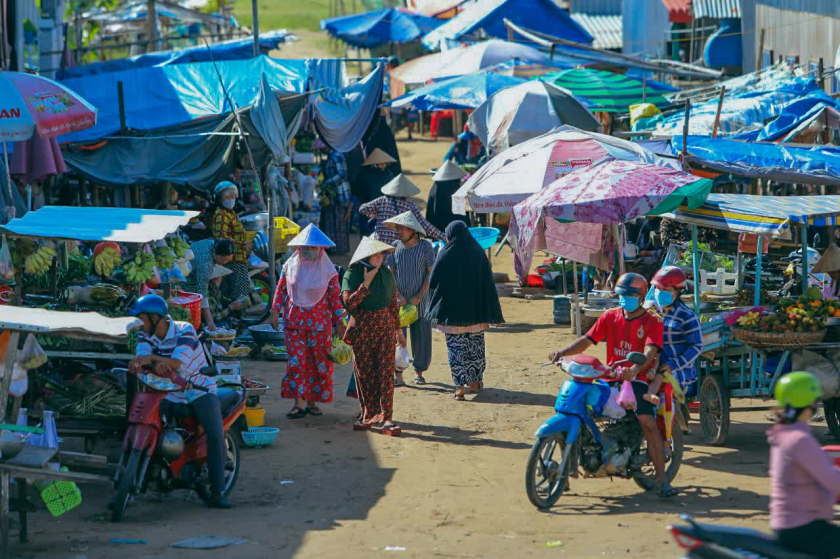
Cham Islam village bustles in a morning market
Heritage in prayer
The Cham villagers here all follow Islam, so they also preserve many unique cultural features such as not drinking alcohol or eating pork. Girls of marriageable age often stay at home following the Gasâm custom, and are usually accompanied by adults wherever they go.
There are no paintings or statues in the mosque, but the most revered heritage is the Koran (Qur'an). Cham Muslim children are taught in the mosque in the evening, after school hours, by teachers (Tuan). But if you ask a child who is not yet old enough to go to school, they can recite fluently the verses taught by their parents since childhood.

Girls of marriageable age usually stay at home according to Gasâm custom.
Like other religions, Cham Islam people have sacred holidays according to their beliefs, but the most special is Ramadan (the month of fasting) - one of the most important and sacred holidays of the Cham Muslim community.
According to custom, on normal days only men are allowed to go to the mosque to pray, while women do it at home. Only during the month of Ramadan are women allowed to go to the mosque to pray.
During Ramadan, believers go to the mosque to pray 5 times at the prescribed time from 4:30 am to 7:30 pm. Healthy adults must perform sawm: no eating, no smoking, no sex, no bleeding and limited labor from sunrise until the end of the evening prayer.

Men will go to the mosque to pray five times a day during the holy month of Ramadan.
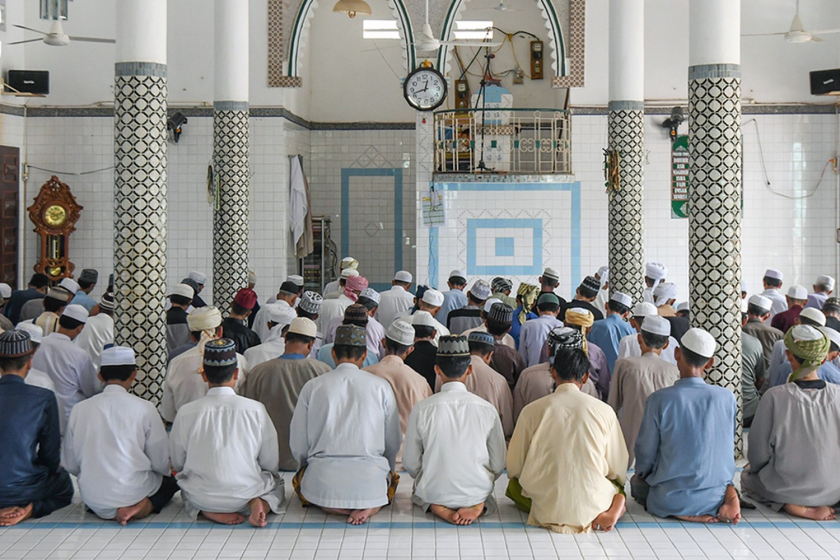
Ramadan is a month of sympathy and understanding for the unfortunate.
Exactly 30 days later, when the new moon appeared in the West, the believers began to resume their normal activities of eating and drinking. After the prayer and ceremony, they shook hands, hugged each other, congratulated each other and asked for forgiveness for the mistakes they had made in the past.
After 8 pm, the Cham villagers will organize a collective Iftar for everyone to enjoy and eat together. While the act of sawm means understanding and experiencing the suffering of unfortunate fates, the collective Iftar meal is a vivid demonstration of the humanity of Ramadan. That is when people with conditions donate money to bring full meals to the poor and eat together without any discrimination.

Iftar meal means sharing abundance with those in need.
Cultural integration
After receiving support from local tourism stimulus programs, the Cham people have begun to pay more attention to developing cultural tourism. Cham women are ready to return to their weaving looms, weaving traditional brocade products for tourists to bring back as gifts.
They enthusiastically greeted any group of tourists passing by, even inviting them in fluent Vietnamese: "Do you want to try weaving? It's very easy." - A hearty voice with a strong Western accent.
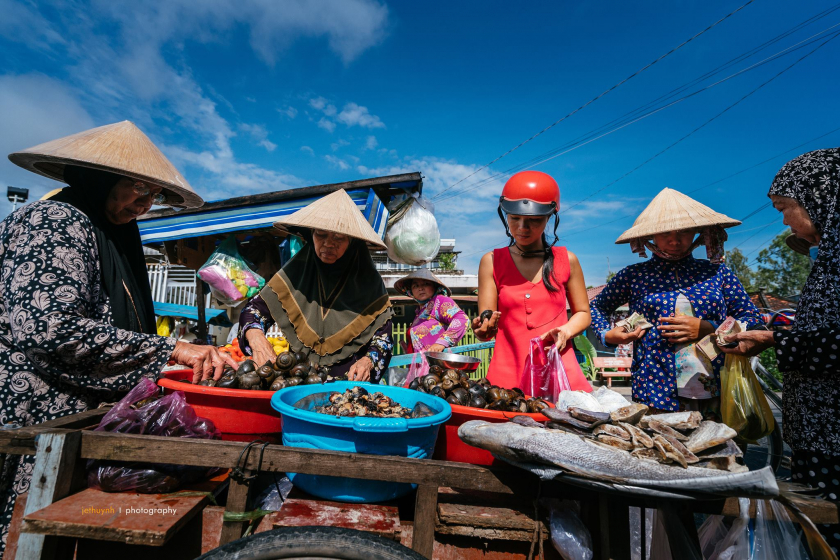
The Cham people are also very active in trade.
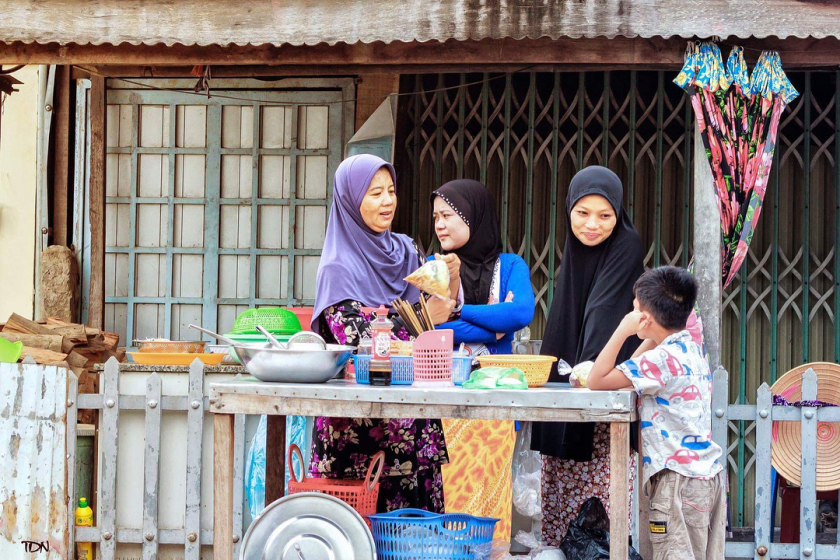
Life is more open but they still keep for themselves the cultural characteristics of the Islamic faith.

Weaving and silk reeling have long been traditional occupations of the Cham people in An Giang.
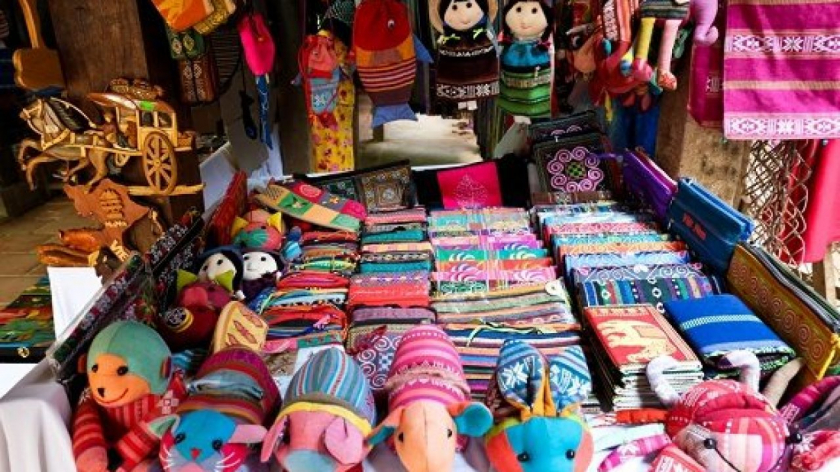
Handicraft products are very expensive, ranging from 30,000 to 300,000 VND.
Life in the Cham village has become more vibrant and bustling, but it still maintains its own simple and sacred quality in daily activities and customs. With that spirit, perhaps very soon, the Cham village of An Giang will become a cultural tourist destination attracting domestic and foreign tourists. But I also believe that the Islamic cultural heritage combined with the rustic lifestyle of the river delta region will always be nurtured and protected by the people here.

























